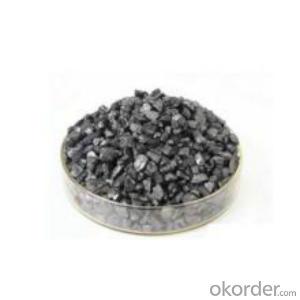FC 99% Calciend Petroleum Coke Manufactured in China
- Loading Port:
- Tianjin
- Payment Terms:
- TT OR LC
- Min Order Qty:
- 20.5
- Supply Capability:
- 2050 m.t./month
OKorder Service Pledge
OKorder Financial Service
You Might Also Like
Brief introduction
Calcined Petroleum Coke comes from delayed coke which extracted from oil refinery. Although Calcined Petroleum Coke contains a little bit higher level of sulfur and nitrogen than pitch coke, the price advantage still makes it widely used during steel-making and founding as a kind of carbon additive/carburant.
BaoSteel is world famous organization. This calcined petroleum coke's raw material is from Bao Steel, which has great quality guarantee. Bao Steel also named this coke as Pitch Coke.
Features
Our product has follwing advantages:
The morphology, chemistry and crystallinity of recarburisers
have a major impact on the overall casting cost. The combined
application and cost benefits, which are derived through the
use of Desulco, enable foundries to manufacture castings in a
highly cost effective manner. It is playing more and more important role in the industry
reduces
Recarburiser consumption
Power consumption
Inoculant consumption
MgFeSi consumption
Furnace refractory wear
Scrap rate
Tap to tap time
Slag inclusions risk
Chill
increases
Casting microstructure
Productivity
Process consistency
Specifications
Products | CPC | ||
F.C.% | 98.5MIN | 98.5MIN | 98MIN |
ASH % | 0.8MAX | 0.8MAX | 1MAX |
V.M.% | 0.7 MAX | 0.7 MAX | 1 MAX |
SULFUR % | 0. 5MAX | 0. 7MAX | 1MAX |
MOISTURE % | 0.5MAX | 0.5MAX | 1MAX |
Pictures
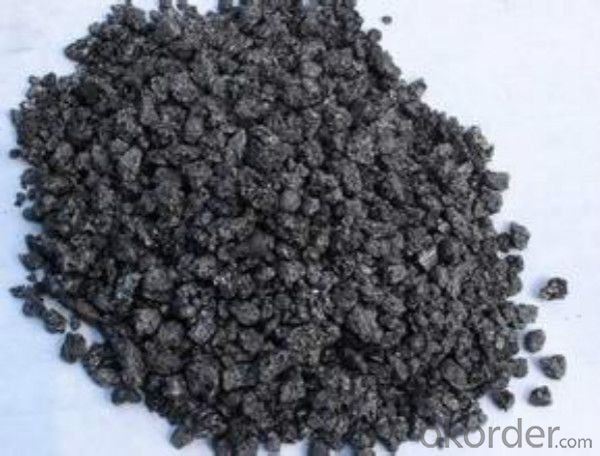
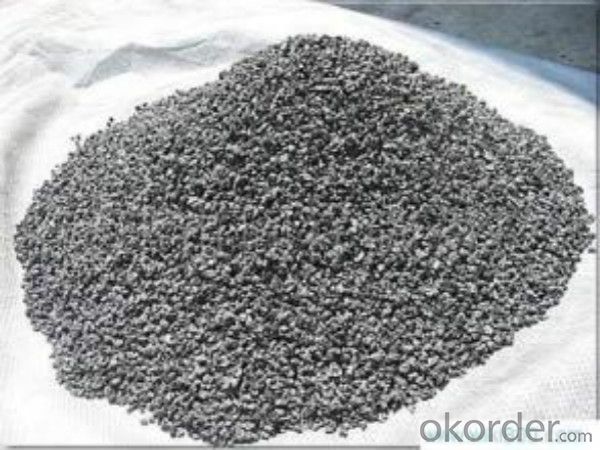
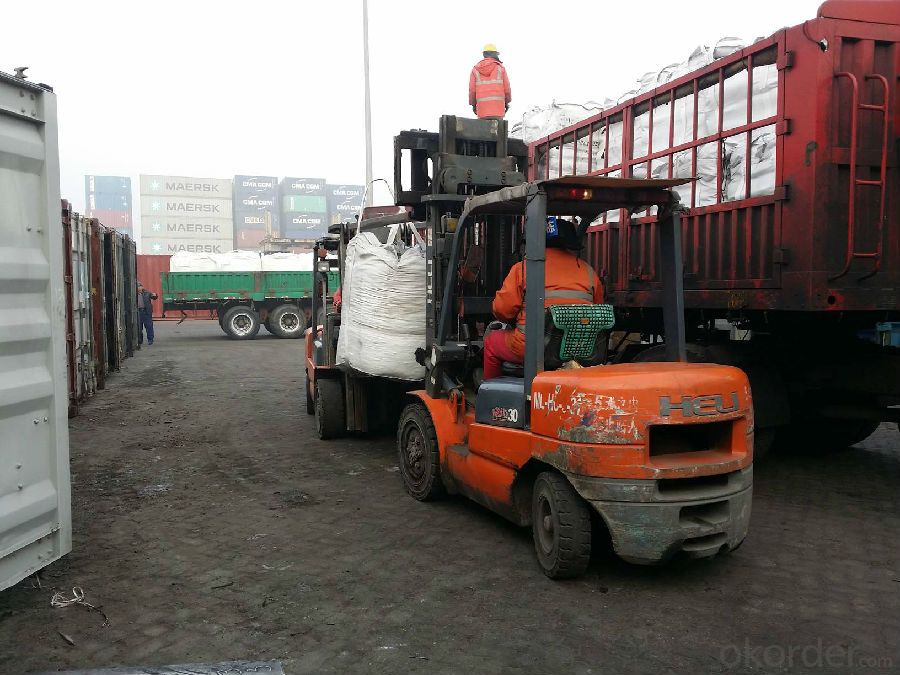
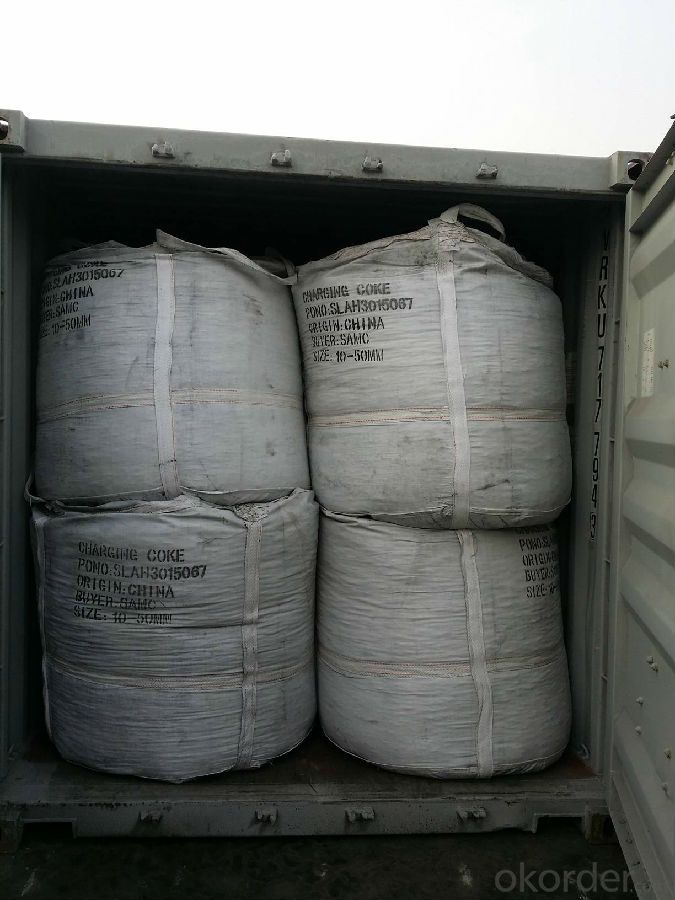
FAQ
1 What is the package?
In jumbo bag with/without pallet
2 What is the delivery time?
25 days after receiving the workable LC or down payment
3 What is the payment term?
T/T, L/C,D/P,D/A
- Q:Is there any difference between carbon plate and universal board?
- Common grades except Q235, Q345, SS400, St12 and so on, as well as SPHC and other hot roll special brand.The chemical composition and mechanical properties of the two standards are basically the same, the difference is usually used after rolling in Kaiping, Kaiping after the plate usually exists obvious residual stress, would adversely affect the subsequent processing.
- Q:How does carbon affect the formation of toxic algal blooms?
- Carbon can have both direct and indirect effects on the formation of toxic algal blooms. One direct effect is through the process of eutrophication. Carbon, in the form of organic matter, enters water bodies through runoff from agricultural activities, sewage discharge, and other human activities. This excess carbon acts as a nutrient for algae, promoting their growth and proliferation. When the carbon supply is abundant, algae can reproduce rapidly, leading to the formation of algal blooms. The presence of carbon also affects the composition of algal communities. Some species of algae, known as harmful algal blooms (HABs), have the ability to produce toxins. These toxins can be harmful to aquatic organisms, as well as humans and animals that come into contact with the water. Carbon concentrations can influence the growth and dominance of HABs, creating favorable conditions for their development. Furthermore, carbon affects the chemistry of the water, including its pH levels. Changes in pH can have a significant impact on the physiology and behavior of algae. Some species of toxic algae are more tolerant of low pH levels, which can be exacerbated by increased carbon dioxide levels in the water. This can create an environment that favors the growth of harmful algal blooms. Indirectly, carbon can also alter the temperature and nutrient dynamics in water bodies. Climate change, driven by increased carbon emissions, can lead to warmer temperatures, which can stimulate algal growth. Additionally, changes in nutrient availability due to carbon-induced alterations in the water cycle can favor the development of toxic algal blooms. In summary, carbon affects the formation of toxic algal blooms through eutrophication, changes in algal community composition, alterations in water chemistry, and indirect impacts on temperature and nutrient dynamics. Understanding these relationships is crucial for developing strategies to mitigate the occurrence and impact of harmful algal blooms.
- Q:When will amines be fertilized?
- Rain does not applyAttention should be paid to the following problems in the application of ammonium bicarbonate:(1) ammonium bicarbonate can not be mixed with alkaline fertilizer in order to prevent ammonia volatilization and cause nitrogen losses.(2) to achieve the "five not": that is not mixed with fine soil without nitrogen, and there was dew without nitrogen, rain without nitrogen, Tian no inch of water without nitrogen, the sun does not apply. If fertilization time was sufficient, it is best able to make deep application of ammonium bicarbonate fertilizer or fertilizer ball. In addition, ammonium bicarbonate in transportation and storage, light light, close packed, stored in a cool dry place, not with the basic fertilizer and human excrement mixed, so as to avoid loss of effective fertilizer.(3) do not contact crops, seeds, roots, stems and leaves, so as not to burn the plants.(4) do not do fertilizer, otherwise it may affect the germination of seeds.(5): bogey and mixed fertilizer after application of ammonium bicarbonate will release ammonia, fertilizer and fertilizer will make contact, bacteria in the death of the fertilizer losing effect.(6) avoid spraying: spraying ammonium bicarbonate are easy to be burnt leaf, affecting crop photosynthesis
- Q:How does carbon impact the prevalence of landslides?
- Carbon, in the form of carbon dioxide (CO2), plays a significant role in impacting the prevalence of landslides. One of the primary ways carbon impacts landslides is through its contribution to climate change. Increased levels of CO2 in the atmosphere result in global warming, which alters weather patterns, precipitation levels, and the overall stability of slopes and landforms. Climate change caused by carbon emissions leads to more frequent and intense rainfall events in many regions. This increased rainfall can saturate soil and increase groundwater levels, making slopes more susceptible to landslides. Additionally, intense rainfall can erode the soil, further weakening the stability of slopes and increasing the likelihood of landslides. Another way carbon impacts the prevalence of landslides is through its impact on vegetation. Carbon dioxide is a vital component of photosynthesis, the process by which plants convert sunlight into energy. However, elevated levels of CO2 can affect plant growth and productivity. Plants play a crucial role in stabilizing slopes and preventing erosion through their extensive root systems. When carbon levels are high, plants may experience reduced growth, which weakens their ability to anchor the soil and protect against landslides. Moreover, carbon emissions contribute to the melting of glaciers and permafrost, which can trigger landslides in mountainous regions. Glaciers act as natural stabilizers, holding large amounts of rock and soil in place. When glaciers melt due to global warming, the sudden release of this material can trigger landslides and result in devastating consequences. In summary, carbon impacts the prevalence of landslides primarily through its contribution to climate change and its subsequent effects on weather patterns, vegetation growth, and the stability of slopes. Addressing carbon emissions and mitigating climate change is essential in reducing the occurrence and severity of landslides.
- Q:What is carbon nanosensor?
- A carbon nanosensor is a nanoscale device made from carbon-based materials that is used to detect and measure the presence of specific molecules or substances at the nanoscale level. It utilizes the unique properties of carbon nanomaterials to provide high sensitivity and accuracy in sensing applications.
- Q:Is there a line cutting of carbon fibers?
- Having the cutting of carbon fibers by wire cutting.Carbon fiber products: carbon fiber reinforced one-way plate, the molding process is to impregnated the carbon fiber resin in the mold curing and continuous pultrusion. Using high quality carbon fiber material and good basic resin, carbon fiber board has good tensile strength, corrosion resistance, seismic resistance, impact resistance and other good performance.The carbon fiber unidirectional plate can give full play to the strength and the elastic modulus of the carbon fiber, and can avoid the resin curing stage of the carbon fiber unidirectional fabric during construction, and has high strength utilization efficiency and convenient construction.
- Q:What are the properties of carbon nanotubes?
- Carbon nanotubes are cylindrical structures made entirely of carbon atoms. They have a unique set of properties that make them highly desirable in various fields of science and technology. Some of the key properties of carbon nanotubes include: 1. Exceptional strength and stiffness: Carbon nanotubes have an incredibly high strength-to-weight ratio, making them one of the strongest materials known to date. They are about 100 times stronger than steel but much lighter. This property makes them suitable for applications requiring lightweight but strong materials. 2. High electrical conductivity: Carbon nanotubes possess excellent electrical conductivity, allowing them to efficiently carry electrical current. They can be utilized as conductive components in various electronic devices, such as transistors, sensors, and energy storage systems. 3. Thermal conductivity: Carbon nanotubes exhibit high thermal conductivity, meaning they can efficiently conduct heat. This property makes them ideal for applications requiring efficient heat dissipation, such as thermal management in electronic devices. 4. Flexibility and resilience: Carbon nanotubes are highly flexible and can withstand significant deformation without breaking. They can be bent and twisted without losing their structural integrity, making them suitable for applications requiring flexibility, such as flexible electronics. 5. Unique optical and mechanical properties: Carbon nanotubes possess unique optical properties that vary depending on their structure and arrangement. They can absorb and emit light across a wide range of wavelengths, making them useful in applications like photodetectors and solar cells. Additionally, their mechanical properties, such as the ability to deform elastically, make them useful in applications requiring shock absorption and impact resistance. 6. Chemical stability: Carbon nanotubes are highly chemically stable, which means they can resist degradation or corrosion when exposed to various chemical environments. This property makes them suitable for applications in harsh conditions or as protective coatings. 7. Large aspect ratio: Carbon nanotubes have a high aspect ratio, with lengths often exceeding thousands of times their diameter. This characteristic allows them to form strong and lightweight composite materials when incorporated into a matrix, enhancing the overall strength and stiffness of the composite. Overall, the unique combination of properties exhibited by carbon nanotubes makes them an exciting and versatile material with immense potential for a wide range of applications, including electronics, aerospace, medicine, and energy storage.
- Q:What are the different methods of measuring carbon dioxide levels in the atmosphere?
- There are several methods used to measure carbon dioxide levels in the atmosphere. These methods include direct measurement, remote sensing, and ice core analysis. Direct measurement is the most accurate and widely used method. It involves taking air samples from various locations around the world and analyzing them using gas analyzers. These analyzers can measure the concentration of carbon dioxide in the air, usually expressed in parts per million (ppm). Remote sensing is another method used to measure carbon dioxide levels. It involves using satellite-based instruments to observe and measure the amount of carbon dioxide in the Earth's atmosphere. These instruments can detect the absorption and scattering of sunlight by carbon dioxide molecules, providing valuable data on its concentration. Ice core analysis is a historical method of measuring carbon dioxide levels. Scientists drill deep into ice sheets in polar regions and extract ice cores. These ice cores contain trapped air bubbles from hundreds or thousands of years ago. By analyzing the carbon dioxide content in these bubbles, scientists can reconstruct past atmospheric carbon dioxide levels and compare them to present-day levels. Each of these methods has its advantages and limitations. Direct measurement provides real-time data and precise measurements, but it requires a vast network of monitoring stations worldwide. Remote sensing offers a global perspective and can cover large areas, but it may have limitations in resolving fine-scale spatial variations. Ice core analysis provides valuable long-term historical data, but it is limited to specific regions and can only provide indirect measurements. Combining these methods allows scientists to gain a comprehensive understanding of carbon dioxide levels in the atmosphere, helping us monitor and assess the impact of human activities on climate change.
- Q:What are the effects of carbon emissions on the stability of mountains?
- Carbon emissions have a range of adverse effects on the stability of mountains. Increased carbon dioxide levels in the atmosphere contribute to global warming, leading to the melting of glaciers and permafrost in mountainous regions. This thawing destabilizes the slopes, resulting in an increased risk of landslides, rockfalls, and avalanches. Additionally, climate change caused by carbon emissions alters precipitation patterns, leading to more intense rainfall events and the potential for erosion and soil instability in mountainous areas. These combined effects pose significant threats to the stability and long-term sustainability of mountain ecosystems.
- Q:What is the difference between carbon nanomaterials and nano carbon materials?
- Carbon nanomaterials are carbon materials with at least one dimension less than 100nm in dispersed phase scale. The dispersed phase can be composed of either carbon atoms or heterogeneous atoms (non carbon atoms), or even nanopores.
1. Manufacturer Overview |
|
|---|---|
| Location | |
| Year Established | |
| Annual Output Value | |
| Main Markets | |
| Company Certifications | |
2. Manufacturer Certificates |
|
|---|---|
| a) Certification Name | |
| Range | |
| Reference | |
| Validity Period | |
3. Manufacturer Capability |
|
|---|---|
| a)Trade Capacity | |
| Nearest Port | |
| Export Percentage | |
| No.of Employees in Trade Department | |
| Language Spoken: | |
| b)Factory Information | |
| Factory Size: | |
| No. of Production Lines | |
| Contract Manufacturing | |
| Product Price Range | |
Send your message to us
FC 99% Calciend Petroleum Coke Manufactured in China
- Loading Port:
- Tianjin
- Payment Terms:
- TT OR LC
- Min Order Qty:
- 20.5
- Supply Capability:
- 2050 m.t./month
OKorder Service Pledge
OKorder Financial Service
Similar products
New products
Hot products
